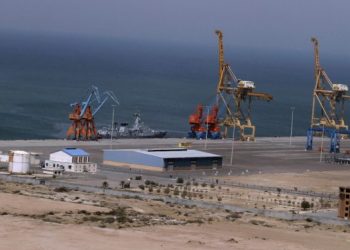ISLAMABAD: Marking a significant milestone in its history, Pakistan’s three major reservoirs — Mangla, Tarbela dams, and Chashma Barrage — have simultaneously achieved their highest capacity for the first time in over half a decade.
This achievement has led to a total water storage of a record-breaking 13.443 million acre-feet (MAF), sparking optimism for robust crop yields in both the ongoing Kharif season and the upcoming Rabi season. “In a historic development, Tarbela, Mangla, and Chashma, the three primary water reservoirs of Pakistan, reached their maximum conservation levels (MCLs) on the same day, 17.08.2023, resulting in a combined storage of 13.443 MAF. The synchronized filling of these major reservoirs is a momentous event,” announced the Indus River System Authority (IRSA) on Thursday.
The filling of these reservoirs to their utmost capacities signifies the heightened availability of water in the dams, a promising sign for agricultural activities and hydropower generation in Pakistan’s foreseeable future, according to the Water and Power Development Authority (Wapda), the entity responsible for operating the reservoirs. IRSA outlined the current storage capacities of these reservoirs, detailing Mangla Dam’s 7.356 MAF at a maximum conservation level of 1,242 feet, followed by Tarbela’s 5.809 MAF at 1,550 feet, and Chashma’s 0.278 MAF at 649 feet.
This achievement in reservoir filling holds great significance as it aids in the control and storage of surplus waters and flood flows during the Kharif season. These stored waters are then strategically transferred to the low-flow Rabi season to meet the province’s water demands during the winter period. The complex process of reservoir filling was successfully accomplished despite multiple natural and technical challenges stemming from factors like hydrological uncertainty due to climate change and the limitations of the current system and reservoir capacities.
IRSA expressed concerns about the potential suppression of late Kharif flows due to initially low flows in the early Kharif season of 2023. However, widespread rains in both upper and lower catchment areas, especially in the eastern rivers, alleviated these concerns. This allowed stakeholders to effectively manage and regulate provincial releases through an integrated approach, ensuring the reservoirs’ synchronized operation and filling. It’s important to note that the Kharif season began with an anticipated 37% water shortage, split into 27% in early Kharif and approximately 10% in late Kharif. Fortunately, there will be no water shortage in the late Kharif phase.
Furthermore, the eastern rivers (Ravi, Beas, and Sutlej) experienced robust water flows after a gap of more than a decade. This surge in water availability downstream of these rivers diminished the need for discharges from Mangla Dam. Going forward, all inflows will be directed into rivers and canal systems. The substantial flows in the eastern rivers also underscore the impact of climate change on weather and flow patterns, issuing a caution to those downstream to maintain a safe distance from old riverbeds.
Adding to the situation, Indian reservoirs on the Sutlej and Beas rivers, specifically Bhakra and Pong storages, are nearing maximum levels once again. In Pakistan, there are two primary crop seasons: Kharif, which involves sowing in April and harvesting in October, and Rabi, which spans from October to April. Kharif crops encompass rice, sugarcane, cotton, maize, mong, mash, bajra, and jowar, while Rabi crops include wheat, gram, lentil (masoor), tobacco, rapeseed, barley, and mustard.





